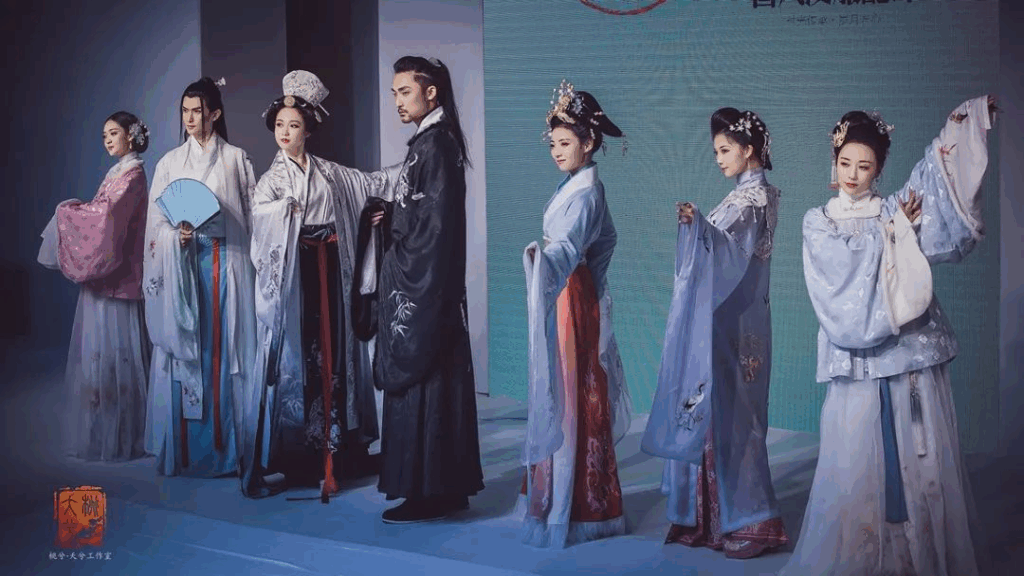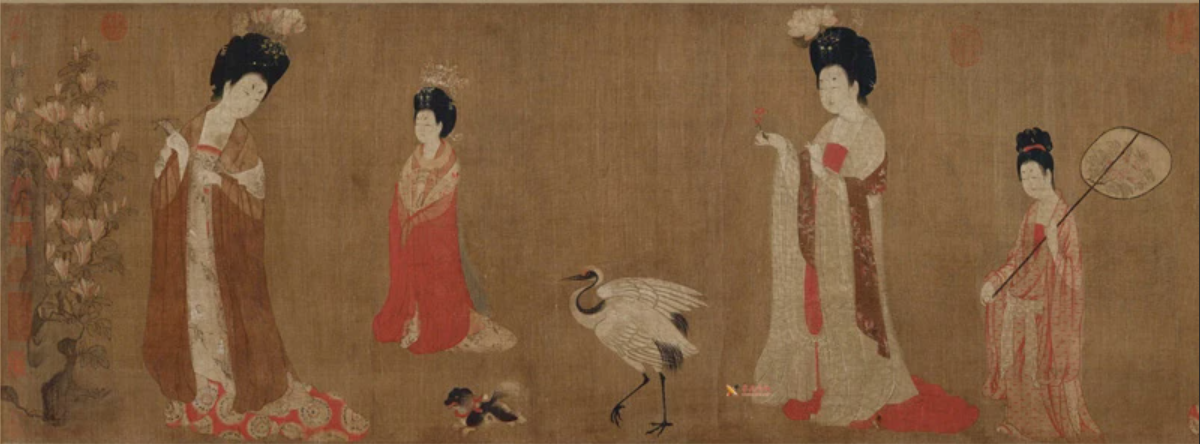When people around the world think of traditional Chinese clothing, most imagine the qipao (also called cheongsam): a high-collared, tight-fitting dress with slits on the sides, often made of silk with floral embroidery. It’s beautiful, elegant, and iconic. But what if I told you this dress isn’t actually traditional for the Han majority, who make up over 90% of China’s population?
In fact, the historical clothing of the Han people is something else entirely — it’s called Hanfu.

📜 What is Hanfu?
Hanfu (汉服) literally means “Han clothing” and refers to the traditional dress worn by the Han Chinese for thousands of years, from the Han Dynasty (206 BCE – 220 CE) through the Ming Dynasty (1368–1644). It includes a wide variety of garments such as:
- Cross-collar robes (wrapped right over left)
- Flowing sleeves
- Sashes instead of buttons
- Layered skirts or long gowns


Hanfu is not just clothing — it reflects ancient aesthetics, Confucian philosophy, and ceremonial customs. Each dynasty developed its own variations, but the core structure and style remained consistent over centuries.
👘 Then Why Do People Think of the Qipao?
That’s a great question — and the answer lies in history.
In the 17th century, the Qing Dynasty was established by the Manchu people, an ethnic minority from northeast China. They imposed cultural policies, including mandatory changes in hairstyles and clothing, replacing Hanfu with Manchu-style dress for both political and cultural control.
The original qipao was a loose-fitting robe worn by Manchu women. Over time, especially in the 1920s–40s in Shanghai, it was modernized into a slim, fashionable dress. This version became a symbol of urban Chinese femininity — and when Westerners saw Chinese women in this modern qipao, they associated it with “traditional Chinese culture.”
So the qipao became the face of “Chinese style” globally, even though it originated from a different ethnic group and time period.
🆚 Hanfu vs. Qipao — What’s the Difference?
| Aspect | Hanfu (汉服) | Qipao / Cheongsam (旗袍) |
|---|---|---|
| Origin | Han Chinese (pre-17th century) | Manchu Chinese (Qing Dynasty, 17th century) |
| Design | Cross-collar, flowing sleeves, loose | High collar, fitted waist, side slits |
| Fastening | Sashes and wrapping | Buttons or zippers |
| Use Today | Revived for festivals, ceremonies, daily wear in Hanfu community | Worn for formal occasions, fashion |
🌏 The Hanfu Revival Movement
In the early 2000s, a grassroots movement in China began reviving Hanfu. Young people started wearing it not just during festivals but also for photoshoots, weddings, even daily life. The goal is to reconnect with traditional Chinese identity and correct the global misunderstanding that traditional Chinese clothing = qipao.
Today, Hanfu communities are growing both in China and internationally. On social media, you can find beautiful outfits, historical recreations, and discussions about cultural heritage — all under hashtags like #Hanfu or #汉服.

💬 Thoughts
The qipao is undeniably a beautiful part of Chinese history, but it’s just one thread in a much richer tapestry. If you’re interested in traditional Chinese clothing, I encourage you to explore Hanfu — its history spans millennia, and its elegance speaks volumes about the culture it represents.
Next time you see a flowing cross-collar robe in a photo or drama, you’ll know: that’s not a costume — that’s Hanfu.



